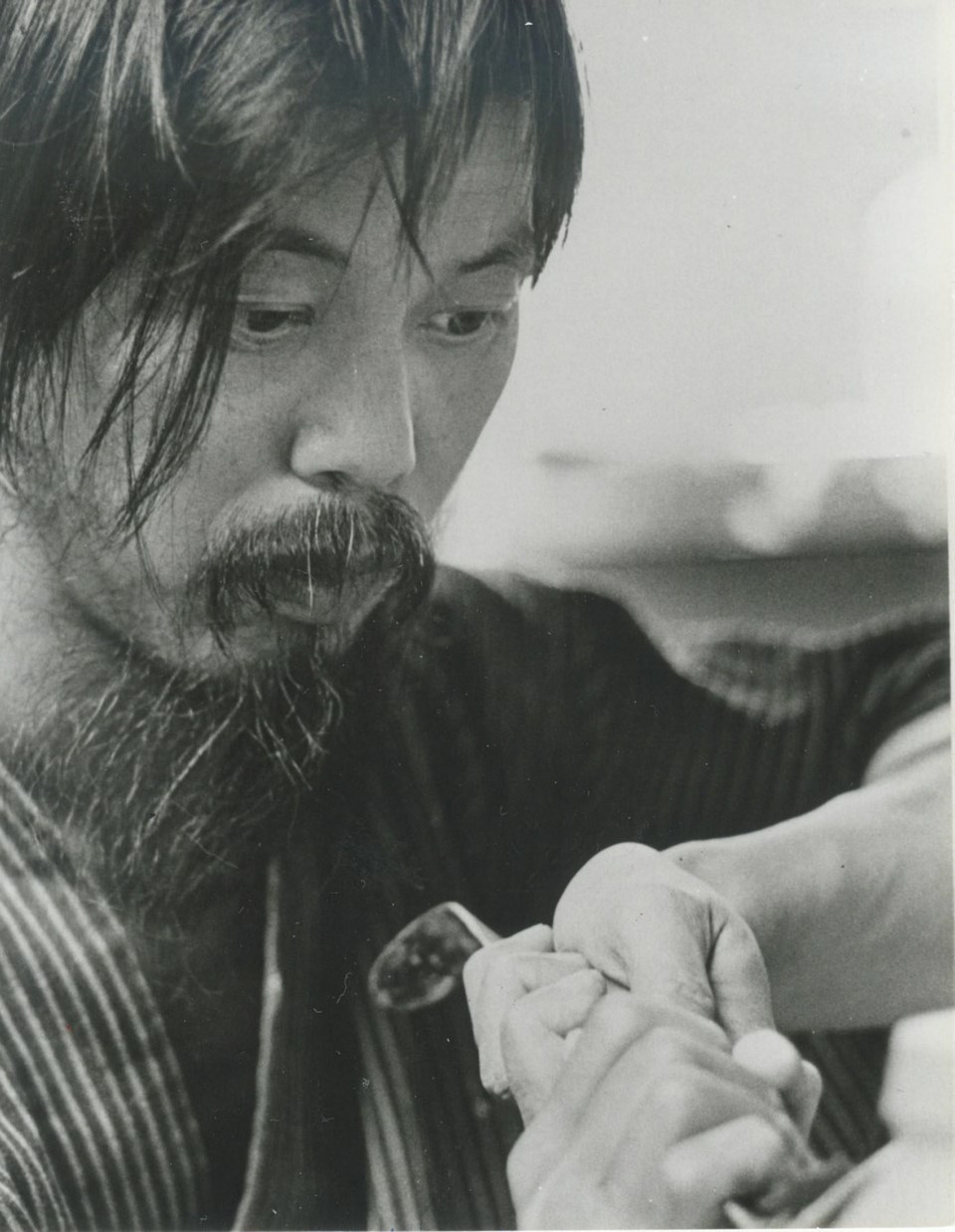Wayne Ngan, one of Canada’s premier artists and a Hornby Island resident for more than 50 years, has died at age 83.
He passed away at home on June 12 due to lymphoma, daughter Goya Ngan said Thursday.
Ngan’s work in ceramics was widely celebrated, but he also created sculptures using materials such as bronze and steel and painted. His art can be found in public galleries and private collections.
Goya Ngan, who was with sister Gailan Ngan on Thursday, said she could not imagine her father doing anything but art in his life.
“He enjoyed each step of making an object,” she said.
“I don’t recall him every complaining about his work, unless it was the business side of things.”
Her father typically worked in surges of two to three months at a time.
“There was a seasonal rhythm to it. In the last decade, painting would happen in the fall, sculpture would be carried out during the winter in China and pottery would begin in spring as the weather warmed up. In the summer he spent much time with visitors to his studio.”
As for his character, she said: “As a teenager, I didn’t like having an eccentric dad, but now I will miss that about him.”
Douglas S. White of Nanaimo, who is also known as Kwulasultun and Tliishin, knew Wayne Ngan for 30 years. He said that while his friend spent a lot of time alone, he was also “great storyteller — he loved talking, he loved chatting.”
White is a lawyer now, but at age 20 he was studying art in Vancouver. His ceramics instructor offered an introduction to Ngan. The two talked on the phone and by the end of their conversation, White was invited to apprentice on Hornby Island in the summer of 1990. That experience was an “incredible privilege,” White wrote in an essay about his cherished summer with Ngan.
“I knew of Wayne from being on Hornby Island in years previous with friends. We would go to visit his remarkable studio — he was always the kindest person … In my studies, I had come to learn of and to know him as the pre-eminent studio potter in Canada.”
Ngan did not teach White how to throw a pot on a wheel, but rather taught him in other ways.
“I wedged his clay for his own throwing, helped with glazing, loaded kilns, fired kilns, tended to customers, cleaned the studio, cleaned his home, made meals, and slept on the storage room floor,” White said.
Ngan allowed White to fire his wood-fired kilns, taught him the names of plants in the garden and they chatted with visiting friends.
“I spent the summer being immersed in his rhythm and his approach to making art. I spent the summer being surrounded by beauty,” he said. “I spent the summer drinking out of his bowls, eating off of his plates. In this way, I learned what a good pot is.
“You get to learn what a great pot feels like in your hands, its weight, its temperature, the texture of the glaze, the quality of the foot. I developed an eye and a touch for what was good and what was great.”
Born in China, Ngan immigrated to Canada in 1951, growing up in Richmond. He attended the Vancouver School of Art, where he received the Marie E. Lambert Pottery Prize. He graduated with honours in 1963 and moved to Hornby Island four years later.
Although he was based on a small island, Ngan lectured and taught ceramics at schools in Canada and China, led workshops locally and abroad, and had his art showcased in exhibitions locally and internationally.
In 1984, he used a Canada Council Grant build a 300-cubic-foot, Sung Dynasty-inspired wood-fired kiln, based on model seen at the Beijing National Museum.
Jeff Dean, a gallerist at Winchester Galleries, said Ngan was “experimental in his output and taking cues from the past.”
The artist was recognized numerous times. Honours included receiving the Saidye Bronfman Award for Masters of the Crafts in 1983 and the British Columbia Creative Achievement Award of Distinction in 2013.
Jon Tupper, director of the Art Gallery of Greater Victoria, said Ngan played an important role in the development of art in B.C. Ngan a solo exhibition at the gallery in 1970.
“His approach to ceramics was both traditional and reflective of the period in which he practised,” Tupper said.
“He built his home on Hornby in the same manner that he made his pottery: Using materials that he found close at hand, creating things that are both functional and incredibly elegant.”
The Gulf Islands in the 1960s attracted some of the greatest potters Canada has every produced, Tupper said, adding: “Wayne Ngan is certainly among the best.”



